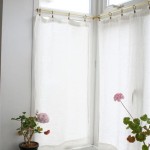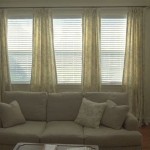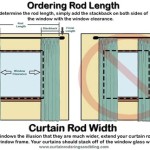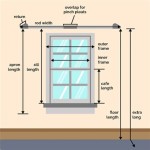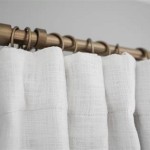Curtains to Keep Sun Out: A Comprehensive Guide
Controlling sunlight entering a living space is a crucial aspect of interior design and home comfort. Excessive sunlight can lead to a variety of issues, including increased room temperature, faded furniture, glare on screens, and disruption of sleep. Curtains designed to block or significantly reduce sunlight offer an effective solution. This article explores the various types of curtains available, their materials, functionalities, and factors to consider when selecting the optimal curtains for sun blocking.
The primary function of sun-blocking curtains is to minimize the amount of light and heat that penetrates a room. This is achieved through a combination of fabric density, weave, and sometimes, the application of specialized coatings. Understanding these factors is essential to choosing the right curtains for specific needs and preferences. Furthermore, the aesthetic value of these curtains should be considered to ensure they complement the overall décor of the space.
Understanding Blackout Curtains
Blackout curtains are specifically designed to prevent nearly all light from passing through. These curtains are typically made with multiple layers of fabric or incorporate a blackout lining or coating. The effectiveness of blackout curtains lies in their ability to completely block external light sources, creating a darkened environment conducive to sleep or focused activities.
The construction of a blackout curtain often involves a tightly woven base fabric, such as polyester or a polyester blend, which provides a degree of light blockage. This is then enhanced by the addition of a blackout lining or coating. The lining is usually applied to the back of the curtain and is made from a dense material that light cannot penetrate. Some curtains utilize multiple layers of this lining to further enhance their light-blocking capabilities. Coatings, on the other hand, are typically applied as a thin layer to the back of the fabric and function similarly to a lining by preventing light from passing through.
Blackout curtains are particularly well-suited for bedrooms, nurseries, and home theaters. In bedrooms, they can improve sleep quality by eliminating distractions from streetlights, sunrise, or other external light sources. In nurseries, they help create a dark and calming environment for infants and young children. For home theaters, blackout curtains are essential for achieving optimal viewing conditions by minimizing glare and enhancing screen clarity.
While blackout curtains excel at blocking light, they also offer additional benefits. They can provide a degree of insulation, helping to regulate room temperature and reduce energy costs. The dense fabric acts as a barrier against heat and cold, keeping rooms cooler in the summer and warmer in the winter. Additionally, blackout curtains can help reduce noise levels by dampening sound from outside.
Considerations when selecting blackout curtains include the color of the fabric. While dark colors generally block more light than lighter colors, the effectiveness of the blackout lining or coating is more important than the color of the face fabric. It is important to check product descriptions and reviews to ensure that the curtains provide the desired level of light blockage. Also, proper installation is crucial to maximize their effectiveness. Curtains should be installed close to the wall and extend beyond the window frame to prevent light from seeping around the edges.
Exploring Room-Darkening Curtains
Room-darkening curtains offer a compromise between sheer curtains that allow a significant amount of light to pass through and blackout curtains that block nearly all light. These curtains are designed to significantly reduce the amount of light entering a room, creating a dimly lit environment that is ideal for certain activities or preferences.
Unlike blackout curtains, room-darkening curtains typically do not have multiple layers or a thick blackout lining. Instead, they rely on a tightly woven and dense fabric to filter out a significant portion of the light. Fabrics used for room-darkening curtains often include polyester, microfiber, or blends of natural and synthetic fibers. The tighter the weave and the denser the fabric, the more effective the curtain will be at reducing light.
Room-darkening curtains are suitable for a variety of spaces, including living rooms, dining rooms, and home offices. In living rooms, they can help reduce glare on televisions and other screens, making it easier to watch movies or play video games during the day. In dining rooms, they can create a more intimate and relaxing atmosphere. In home offices, they can help reduce eye strain and improve concentration by minimizing distracting external light sources.
One of the advantages of room-darkening curtains is that they allow some natural light to filter through, creating a softer and more natural ambiance than blackout curtains. This can be particularly desirable in rooms where complete darkness is not necessary or preferred. The filtered light can also help create a more visually appealing and inviting space.
When choosing room-darkening curtains, it is important to consider the level of light reduction that is desired. Some curtains may block as much as 80-90% of the light, while others may block only 60-70%. The darker the color and the denser the fabric, the more light the curtains will block. It is also important to consider the overall style and design of the curtains to ensure they complement the decor of the room.
Room-darkening curtains offer a balanced approach to light control, providing a significant reduction in light without completely eliminating it. They are a versatile option for homeowners who want to create a comfortable and inviting space while still maintaining a degree of natural light.
Factors in Material and Color Selection
The materials used in curtains significantly impact their ability to block sunlight. Denser, heavier fabrics naturally impede light transmission more effectively than lighter, more translucent materials. Common fabrics used for sun-blocking curtains include polyester, microfiber, cotton blends, and specially treated materials designed for light control.
Polyester is a popular choice due to its durability, affordability, and resistance to wrinkles and fading. It is also relatively easy to clean and maintain. Microfiber is another synthetic fabric known for its softness and ability to block light. It is often used in room-darkening and blackout curtains due to its tightly woven construction.
Cotton blends, particularly those with a higher percentage of cotton, can provide a natural look and feel while still offering a degree of light control. However, cotton is more prone to fading and shrinking than synthetic fabrics, so it may require more care and maintenance. Specialty fabrics, such as those with a thermal or blackout lining, are specifically designed to block light and provide insulation. These fabrics often incorporate multiple layers or treatments to enhance their light-blocking capabilities.
Color plays a crucial role in determining how effectively curtains block sunlight. Darker colors, such as black, navy blue, and deep brown, absorb more light than lighter colors, making them more effective at preventing light from entering a room. Lighter colors, such as white, beige, and pastel shades, reflect more light and are less effective at blocking sunlight.
However, the color of the curtain is not the only factor to consider. The type of fabric and the presence of a blackout lining or coating also play a significant role. A light-colored curtain with a blackout lining can be just as effective at blocking light as a dark-colored curtain without a lining. When selecting curtains, it is important to consider the overall aesthetic of the room and choose a color that complements the decor.
In addition to blocking light, the color of the curtains can also affect the mood and atmosphere of the room. Darker colors can create a more cozy and intimate atmosphere, while lighter colors can make a room feel brighter and more spacious. The choice of color should be based on the desired effect and the overall design of the space.
When selecting materials and colors for sun-blocking curtains, it is important to strike a balance between functionality and aesthetics. Choose fabrics and colors that effectively block light while also complementing the overall decor and creating the desired atmosphere in the room. Consider the specific needs of the space and the level of light control that is required to make an informed decision.
Beyond the fabric and color, the construction and design of the curtains contribute to their ability to block sunlight. Curtains with pleats or folds can create gaps that allow light to seep through. Flat panel curtains, on the other hand, provide a more uniform surface and can block light more effectively. The way the curtains are hung also matters. Installing curtains close to the wall and extending beyond the window frame can minimize light leakage around the edges.

Sun Zero Alna Theater Grade Sage Green Polyester 52 In W X 63 L Rod Pocket 100 Blackout Curtain Single Panel 63566

Sun Zero Aria 2 Pack Magnetic Closure Theater Grade 100 Blackout Back Tab Curtain Panel Pair 52 Inchx84 Inch Cream

The Best Curtains To Keep Heat Out Year Round Shade

Sun Zero Cyrus Thermal 40 In W X 84 L 100 Blackout Grommet Curtain Panel Soft Gold 57774

Blackout Curtains The Home

Sun Zero Alamea Botanical Print Theater Grade 100 Blackout Grommet Curtain Panel 40 X84 Indigo

Sun Zero Oslo Theater Grade Holiday Red Polyester 52 In W X 108 L Grommet 100 Blackout Curtain Single Panel 63559

Sun Zero Vance 2 Piece Magnetic Closure 100 Blackout Back Tab Curtain Panel Pair 37 Inchx108 Inch White

How To Layer Sheer Blackout Curtains Spiffy Spools

Sun Zero Avery 100 Blackout Curtain Panel 40x84 Sage Green Noise Blocking Energy Efficient Wal Com

